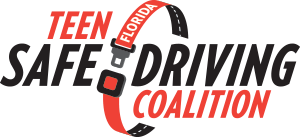
Setting Boundaries for Your Teen Driver: A Crucial Step to Safety
As a parent, watching your teen learn to drive can be both exciting and nerve-wracking. The newfound independence they experience is often accompanied by a parent’s concern for their safety on the road. Setting clear boundaries with your teen driver is not just about rules and restrictions; it’s about ensuring their safety and helping them develop responsible driving habits. Establishing these boundaries early on can make all the difference in preventing dangerous behaviors and reducing the likelihood of a crash.
Why Boundaries Matter
Driving is a privilege, not a right, and it comes with significant responsibilities. Teen drivers are more prone to crashes due to inexperience, distractions, and overconfidence behind the wheel. According to the Centers for Disease Control and Prevention (CDC), teen drivers are three times more likely than adult drivers to be involved in a fatal crash. This alarming statistic highlights the importance of parental involvement in shaping their driving habits early on.
Setting boundaries provides a framework that helps teens navigate their newfound freedom while staying safe. Clear boundaries can include things like curfews, driving zones, and rules around who can be in the car. These limits are not meant to restrict your teen’s independence but rather to protect them from risks they might not fully understand yet. When teens know what is expected of them and why those expectations exist, they are more likely to adhere to safe driving practices.
Types of Boundaries to Set
When it comes to setting boundaries, there are several areas that parents should focus on to reduce the chances of a crash or collision.
- Curfews: One of the most critical boundaries is setting a driving curfew. Nighttime driving is particularly dangerous for teens, as visibility is reduced and fatigue can set in. Additionally, teens are more likely to engage in risky behaviors and be distracted when driving late at night. Many states, including Florida, have curfews built into their Graduated Driver Licensing (GDL) programs, which restrict nighttime driving for teens until they gain more experience. See Florida’s GDL laws here!
- Driving Zones: Establishing where your teen is allowed to drive is another important boundary. Limiting driving to familiar areas, like within a certain radius of home or to school and extracurricular activities, can reduce the likelihood of a wreck. Unfamiliar roads and high-traffic areas can be overwhelming for new drivers. Gradually increasing the areas they’re allowed to drive as they gain more experience can help build their confidence in a controlled environment.
- Passenger Restrictions: Passengers, especially peers, are a leading cause of distraction for teen drivers. Studies have shown that the presence of friends in the car significantly increases the risk of a crash. In fact, having just one passenger doubles the risk, and having two or more passengers triples it. Florida’s GDL laws restrict passengers for new drivers, but parents can enforce even stricter rules at home. Limiting passengers or not allowing any at all during the first year of driving can help teens focus on the road without added distractions. Read more about the effect of passengers on teen driver behavior here!
- Weather Restrictions: Another boundary to consider is limiting your teen’s driving during inclement weather. Rain, fog, and even strong winds can make driving more difficult for inexperienced drivers. Until your teen has gained more confidence and experience, it’s wise to restrict their driving during poor weather conditions.
Creating a Driving Contract
One effective way to set boundaries and ensure your teen understands them is by creating a driving contract. A driving contract is a written agreement between you and your teen that outlines the expectations, rules, and consequences related to driving. By involving your teen in the creation of the contract, you encourage them to take ownership of their behavior behind the wheel.
The Florida Teen Safe Driving Coalition Safe Driving Contract includes clear rules, such as obeying speed limits, wearing safety belts at all times, and avoiding distractions like texting or using social media while driving. It also helps you create an outline for the consequences of breaking these rules. For example, losing driving privileges for a week or more could be a consequence for speeding or driving with friends in the car without permission. Conversely, you can also include rewards for demonstrating responsible driving, such as extending curfew or allowing more driving freedom over time.
For ease, click here to access the FTSDC Parent/Teen Safe-Driving Contract!
Enforcing Boundaries
Once boundaries are set, consistency is key. Your teen needs to know that these rules are non-negotiable, and any violations will have consequences. However, enforcing these boundaries doesn’t mean you need to hover over your teen every time they get behind the wheel. Technology can help you monitor their driving behavior and ensure they’re following the rules.
Several driving apps and telematics systems can track your teen’s driving habits in real-time. These tools can monitor their speed, braking patterns, and whether they’re using their phone while driving. Some insurance companies even offer discounts for using these tracking systems. While it’s important not to invade your teen’s privacy, using these tools as a safety net can give you peace of mind while your teen builds their driving skills.
Another way to enforce boundaries is by setting clear consequences for breaking the rules. Consistency is crucial here—if your teen knows there are no real consequences for unsafe driving, they’re more likely to test limits. On the other hand, if they understand that breaking curfew or speeding will result in losing the car for a week, they’ll be more motivated to follow the rules.
The Role of Communication
While setting and enforcing boundaries is important, maintaining open communication with your teen is equally crucial. Teens are more likely to follow rules when they understand the reasons behind them and feel they have a say in the process. Instead of simply dictating the rules, take the time to explain why these boundaries are in place and how they will help keep your teen safe.
Let your teen ask questions and be willing to listen to their concerns. They may not agree with every rule but involving them in the conversation can help them feel more invested in their safety. Additionally, regular check-ins about how they’re feeling behind the wheel can provide valuable insight into areas where they might need more practice or guidance.
Why Boundaries Reduce Risk
Ultimately, setting boundaries is about reducing the risks your teen faces on the road. Inexperienced drivers are more likely to make mistakes, and these mistakes can lead to serious consequences. By limiting their exposure to high-risk situations, such as driving late at night, with passengers, or in unfamiliar areas, you’re giving them the opportunity to develop safe driving habits in a controlled environment.
Research shows that parental involvement plays a significant role in reducing teen crashes. The National Highway Traffic Safety Administration (NHTSA) reports that teens whose parents set firm rules about driving are less likely to engage in risky behaviors like speeding or driving under the influence. When parents take an active role in their teen’s driving journey, it leads to safer outcomes.
Ensuring a Safe Journey
Setting boundaries for your teen driver is one of the most important things you can do to keep them safe on the road. By establishing clear rules around curfews, driving zones, passengers, and weather conditions, you’re giving your teen the tools they need to develop responsible driving habits. A driving contract can formalize these boundaries and help your teen take ownership of their safety.
Remember, consistency is key when it comes to enforcing these rules. Use technology and clear consequences to ensure your teen follows the boundaries you’ve set. Most importantly, maintain open communication with your teen throughout their driving journey. Let them know that these boundaries are in place not to limit their freedom but to protect them and those around them.
As your teen gains more experience, you can gradually relax some of these boundaries, but safety should always be the top priority. In doing so, you’ll help reduce the risk of collisions and ensure your teen has the skills and habits to drive safely.
To help you navigate tricky conversations with your teen, click here for an in depth FTSDC Safe Driving Guide for Teens & Parents!

